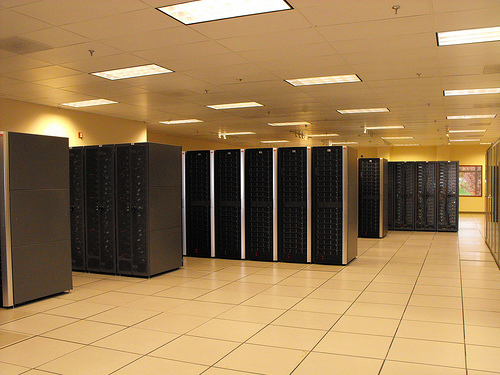HP's newest supercomputer geared for energy and environment

The newest supercomputer in town isn't for simulating nuclear explosions or the human brain, but rather take on arguably more pressing problems in areas such as climate science, hydrogen storage and molecular chemistry.
Built by HP, the $21.4 million Chinook is a custom-made machine specifically designed for the demands of computational chemistry. It was commissioned for use by Pacific Northwest National Laboratory and the Department of Energy, and is housed at the Environmental Molecular Sciences Laboratory (EMSL).
The Chinook (named after the king salmon via a user contest) can perform more than 160 trillion calculations per second, ranking it among the top 40 fastest computers in the world. It's almost 15 times faster than its predecessor, the EMSL MPP2, which could run 11.2 trillion calculations per second.

Chinook is a high performance computer that has been tailored to meet the current and future operational needs of Department of Energy (Photo: Pacific Northwest National Laboratory)
As for specs, the DOE says "the Chinook has 4620 Quad-core processors built into 2310 nodes. Each node can be thought of as the equivalent of four personal computers. But Chinook's nodes are more like supercharged PCs: the Quad-cores give each node the equivalent of eight processor-cores and 32 gigabytes of memory."
Anna Palmisano, DOE associate director for Biological and Environmental Research, said, "This new supercomputer will allow scientists to develop a molecular-level understanding of the complex biological, chemical and physical processes that underlie the environmental and energy challenges facing DOE and the nation."
The supercomputer is open to scientists the world over, not just EMSL researchers. So any researcher can sign-up and submit a proposal, but they'd have to compete for time through a peer review process and conduct research that generally supports the DOE's missions in energy, the environment, or national security.
Chinook's top job is to run NWChem, a computational chemistry program that allows researchers to simulate and predict the chemistry within and between molecules. However, the supercomputer can run a wide variety of programs to tackle problems involving gas hydrates, bacterial transformers and green plastics, each of which you can find more detail on here.